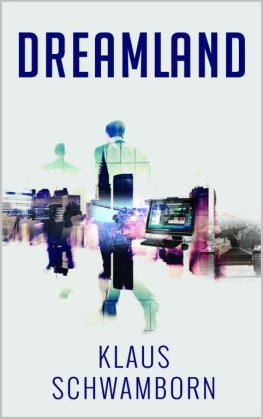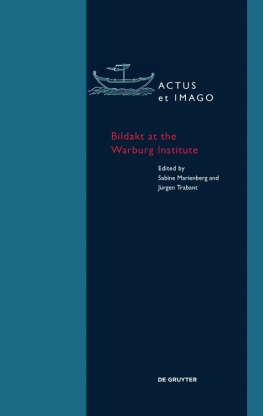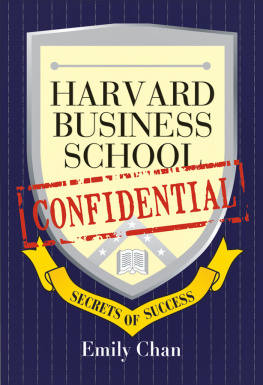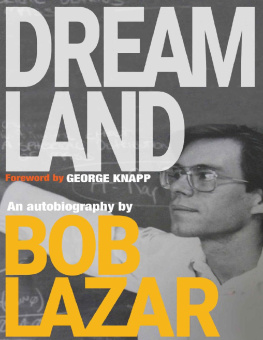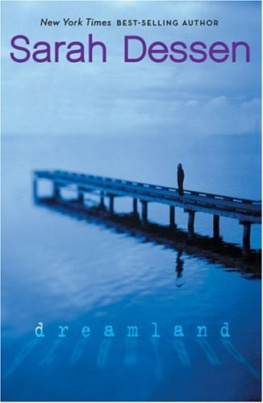Emily J. Levine - Dreamland of Humanists Warburg, Cassirer, Panofsky, and the Hamburg School
Here you can read online Emily J. Levine - Dreamland of Humanists Warburg, Cassirer, Panofsky, and the Hamburg School full text of the book (entire story) in english for free. Download pdf and epub, get meaning, cover and reviews about this ebook. year: 2013, publisher: University of Chicago Press, genre: Romance novel. Description of the work, (preface) as well as reviews are available. Best literature library LitArk.com created for fans of good reading and offers a wide selection of genres:
Romance novel
Science fiction
Adventure
Detective
Science
History
Home and family
Prose
Art
Politics
Computer
Non-fiction
Religion
Business
Children
Humor
Choose a favorite category and find really read worthwhile books. Enjoy immersion in the world of imagination, feel the emotions of the characters or learn something new for yourself, make an fascinating discovery.

- Book:Dreamland of Humanists Warburg, Cassirer, Panofsky, and the Hamburg School
- Author:
- Publisher:University of Chicago Press
- Genre:
- Year:2013
- Rating:5 / 5
- Favourites:Add to favourites
- Your mark:
- 100
- 1
- 2
- 3
- 4
- 5
Dreamland of Humanists Warburg, Cassirer, Panofsky, and the Hamburg School: summary, description and annotation
We offer to read an annotation, description, summary or preface (depends on what the author of the book "Dreamland of Humanists Warburg, Cassirer, Panofsky, and the Hamburg School" wrote himself). If you haven't found the necessary information about the book — write in the comments, we will try to find it.
Emily J. Levine: author's other books
Who wrote Dreamland of Humanists Warburg, Cassirer, Panofsky, and the Hamburg School? Find out the surname, the name of the author of the book and a list of all author's works by series.
Dreamland of Humanists Warburg, Cassirer, Panofsky, and the Hamburg School — read online for free the complete book (whole text) full work
Below is the text of the book, divided by pages. System saving the place of the last page read, allows you to conveniently read the book "Dreamland of Humanists Warburg, Cassirer, Panofsky, and the Hamburg School" online for free, without having to search again every time where you left off. Put a bookmark, and you can go to the page where you finished reading at any time.
Font size:
Interval:
Bookmark:
Dreamland of Humanists
Warburg, Cassirer, Panofsky, and the Hamburg School
EMILY J. LEVINE
The University of Chicago Press
Chicago and London
EMILY J. LEVINE is assistant professor of history at the University of North Carolina at Greensboro. Born in New York City, she lives in Durham, North Carolina.
The University of Chicago Press, Chicago 60637
The University of Chicago Press, Ltd., London
2013 by The University of Chicago
All rights reserved. Published 2013.
Printed in the United States of America
22 21 20 19 18 17 16 15 14 13 1 2 3 4 5
ISBN-13: 978-0-226-06168-9 (cloth)
ISBN-13: 978-0-226-06171-9 (e-book)
DOI: 10.7208/chicago/9780226061719.001.0001
Library of Congress Cataloging-in-Publicaion Data
Levine, Emily J., author.
Dreamland of humanists : Warburg, Cassirer, Panofsky, and the Hamburg school / Emily J. Levine.
pages cm
Includes bibliographical references and index.
ISBN 978-0-226-06168-9 (cloth : alk. paper) ISBN 978-0-226-06171-9 (e-book) 1. ArtGermanyHamburg. 2. Warburg, Aby, 18661929. 3. Cassirer, Ernst, 18741945. 4. Panofsky, Erwin, 18921968. I. Title.
N6886.H3L48 2013
709.43515dc23
2013022613
 This paper meets the requirements of ANSI/NISO Z39.48-1992 (Permanence of Paper).
This paper meets the requirements of ANSI/NISO Z39.48-1992 (Permanence of Paper).
An act of thought is certainly a part of the thinkers experience. It occurs at a certain time, and in a certain context of other acts of thought, emotions, sensations, and so forth. Its presence in this context I call its immediacy; for although thought is not mere immediacy it is not devoid of immediacy. The peculiarity of thought is that, in addition to occurring here and now in this context, it can sustain itself through a change of context and revive in a different one.
R. G. COLLINGWOOD, THE IDEA OF HISTORY
Contents
Illustrations
Preface
There was a running joke at New Yorks Trinity School that the crucifix prominently displayed in the chapel stood for the T in Trinity. Having started as a solution to Jewish grandparents vexing question of how to justify the presence of their grandchildren in an Episcopal School, the bon mot retained symbolic power. The previously sacrosanct crucifix now transformed, Jewish teenagers, including myself, could stand and sing in honor of the Trinity Tigers. Laughter mediated the secular and the religious worlds.
Of course, jokes like this one, in isolation, are unfunny and meaningless. In this respect, jokes work the same way images in a painting do for an art historian: they are, as one cultural historian has argued, mute without context. This was the circular logic behind the art historian Erwin Panofskys famous observation that an Australian bushman would be unable to recognize the subject of a Last Supper. Without the relevant religious and textual background, the Last Supper, according to Panofsky, would appear as no more than an excited dinner party. When the Trinity chaplain stood in front of the cross, it would have been difficult, even for a bushman, to argue that it was not a Christian symbol. Yet the cross-as-T joke persisted at the Trinity School because enough Jews insisted on reinterpreting the symbol. In this case something particularthe crosscould be read as universal and therefore as inclusive. The Jewish students managed to deflect the criticism of discontented grandparents and to show their commitment to the dominant culture.
These scholars collectively focused on icons and structures of thought, but a similar sensitivity must be applied by intellectual historians who trace ideas over time. What the esteemed British historian R. G. Collingwood called the peculiarity of thought captures this paradox: ideas exist in a specific time and place, but they are also remade in different contexts with sometimes drastically different results. Our job as historians is to grasp this mystical transformation, even if the contexts remain malleable and subject to debate.
German Jewish intellectuals in the late nineteenth and early twentieth centuries, among them Warburg, Cassirer, and Panofsky, learned this lesson all too well. As this book shows, these secular Jews embraced the dominant culture of universalism with a German inflection. But they did not so much move beyond Judaism, to borrow George Mosses famous phrase, as use German and European culture to mediate their religious identity. It often seemed that being a good Jew meant contributing to the general inquiry of ideas. Similarly, they sought, often discreetly, and with recourse to universalism, to open up their German audiences to the Jewish world.
The familiar story of secular German-Jewish humanists has usually been presented in hindsight as a tale of delusion. But as astute scholars of symbolism, Warburg, Cassirer, and Panofksy not only were attuned to the broader permutations of symbols over time but also were aware of the symbolism of their lives and works. They made conscious choices about their scholarly material and modes of inquiry and presented their work with inflections that differed depending on the audience. It is one of the tragedies of this tale that this scholarly embrace of universalism was almost always interpreted by non-Jews as peculiar to Judaism. Yet that misreading should not take away from the care with which the German-Jewish humanists approached their intellectual lives; it only underscores the importance of context in analyzing their ideas. For to ascertain the complete historical significance of their works, the historian must reconstitute the texture of their individual lives, the web of institutions, and the symbolic valences in which their ideas were produced and first received.
One lesson of the cultural and intellectual history of the Weimar Republic is that the history of ideas is hardly an esoteric matter; it is of central historical importance.
The Trinity Schools crucifix, too, has a coda in the struggle over its symbolism. True to some conception of the universal humanist tradition, I became a German historian. But despite this professional identity, those same disapproving grandparents boasted to their friends that their granddaughter was a scholar of Jewish history. In an ironic reversal of the fate held by the crucifix, they inverted my contribution to universalism to give meaning to their particular identity. If the joke in the end was on me, it also speaks to this books aimto illustrate why context matters for the emergence, reception, and writing about ideas and how that content is, in turn, modified by these outside forces. To the memory of my grandparents Florence Levine, Lillian Shapiro, and Max Shapiro and in honor of my grandfather Jacques Levine, for the tireless spirit and exceptional grace with which they have lived in these multiple worlds, I dedicate this book.
Acknowledgments
As a scholar interested in the conditions for the possibility of knowledge, I would be remiss if I did not recognize that this book has benefited from conditions that were particularly fruitful and rewarding. I am grateful to my editor Doug Mitchell for his initial interest, engaging conversation, and unwavering support throughout a process that was longer than either of us imagined. I am also indebted to several anonymous readers, including, in particular, reader one, whose two very close readings and penetrating methodological challenges deserve much credit for improving the manuscript and present a model of generosity in scholarly practice.
Since I began this book as a young scholar, however, these acknowledgments include early and key input in my intellectual, moral, and professional development, and it is my pleasure to extend thanks to the people, relationships, and institutions that contributed to that process. As an undergraduate at Yale, I had the opportunity of whetting my intellectual curiosity in Directed Studies, a gem of a program in Western history, literature, and philosophy. Here I must thank especially Charlie Hill, Jane Levin, and Norma Thompson, whose energy and passion for the study of ideas were a huge inspiration to me and whose support of my scholarly aspirationshowever prematurewas truly appreciated. I am especially grateful to Kevin Repp, who showed me how I might turn that passion into a profession and then guided the way to Stanford, where I had the great fortune to pursue my graduate work under three scholars of renown and distinction: James J. Sheehan, Paul Robinson, and Steven J. Zipperstein. As experts in Germans, Jews, and ideas, Jim, Paul, and Steve were for me the ultimate dream team. I am grateful to Paul for showing in the most elevated way how the intimate is interwoven with the intellectual and to Steve for introducing me to the manifold field of Jewish studies and insisting that I figure out what kind of historian I wanted to be. For his expert dissertation and continuing professional advice, I thank Jim. He rightly forced me to narrow and ground my at times lofty and unwieldy project, and his careful readings and characteristically incisive comments have given me more direction than he will know. Jims career is truly a model of Wissenschaft als Beruf, to which I continuously aspire.
Next pageFont size:
Interval:
Bookmark:
Similar books «Dreamland of Humanists Warburg, Cassirer, Panofsky, and the Hamburg School»
Look at similar books to Dreamland of Humanists Warburg, Cassirer, Panofsky, and the Hamburg School. We have selected literature similar in name and meaning in the hope of providing readers with more options to find new, interesting, not yet read works.
Discussion, reviews of the book Dreamland of Humanists Warburg, Cassirer, Panofsky, and the Hamburg School and just readers' own opinions. Leave your comments, write what you think about the work, its meaning or the main characters. Specify what exactly you liked and what you didn't like, and why you think so.

